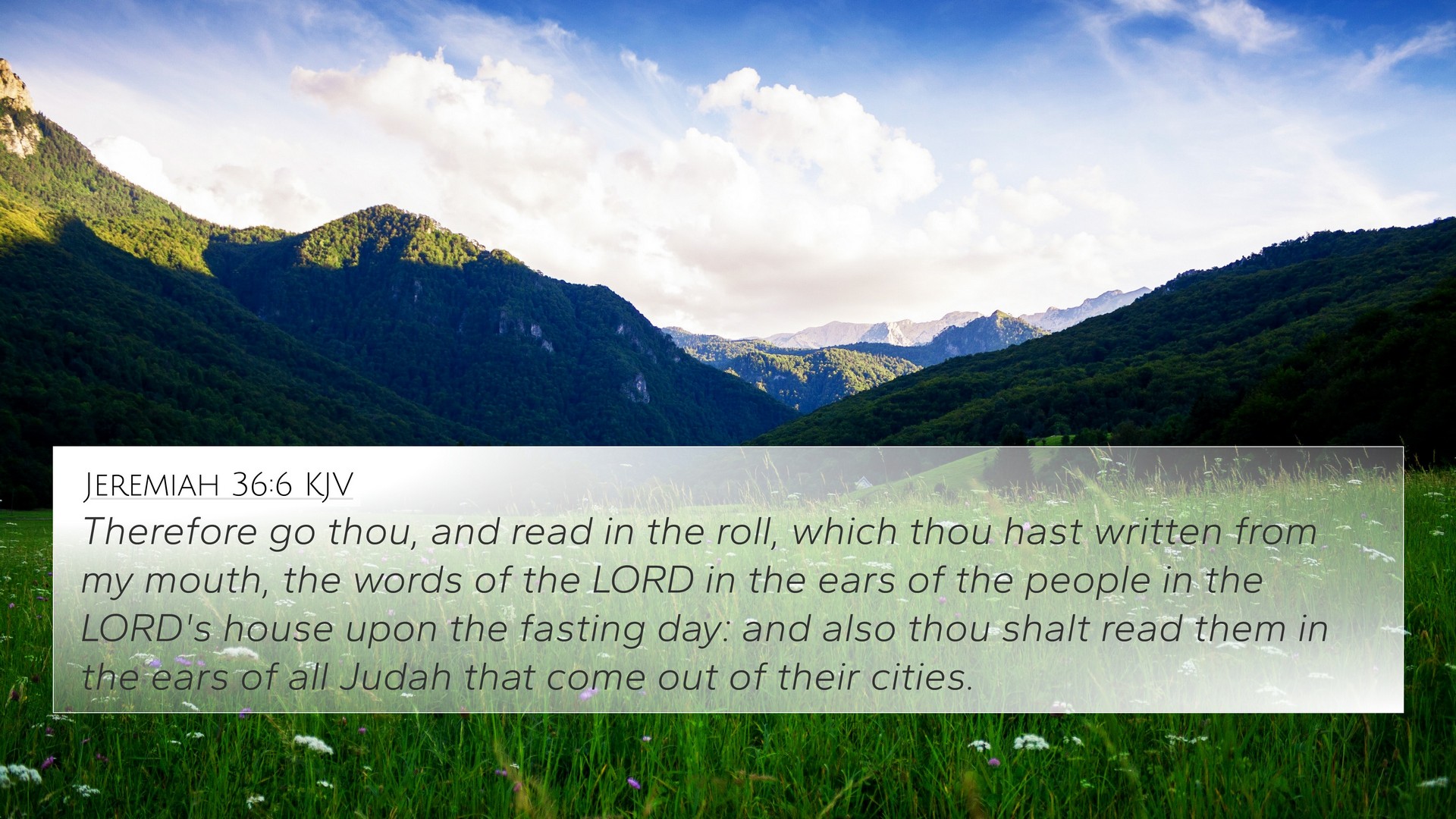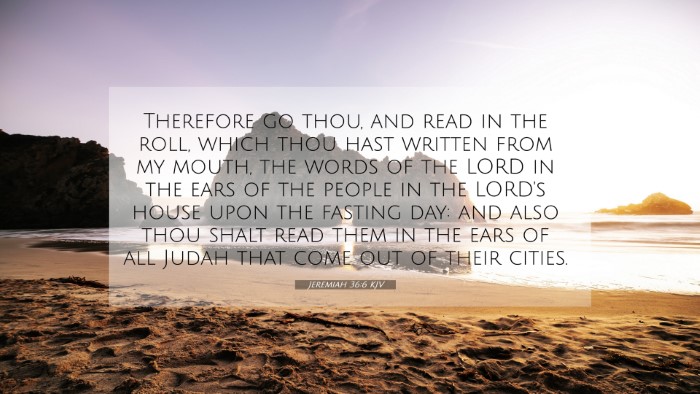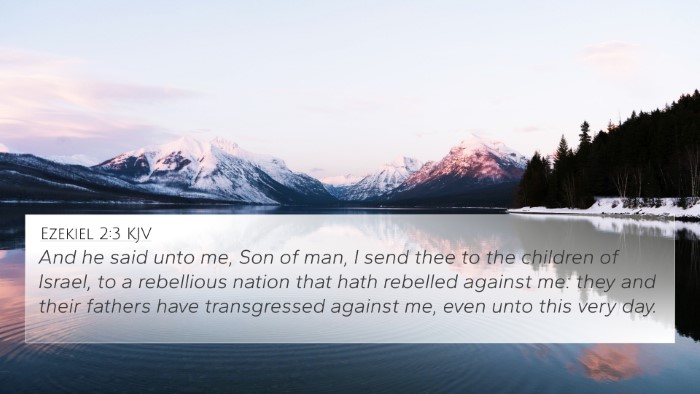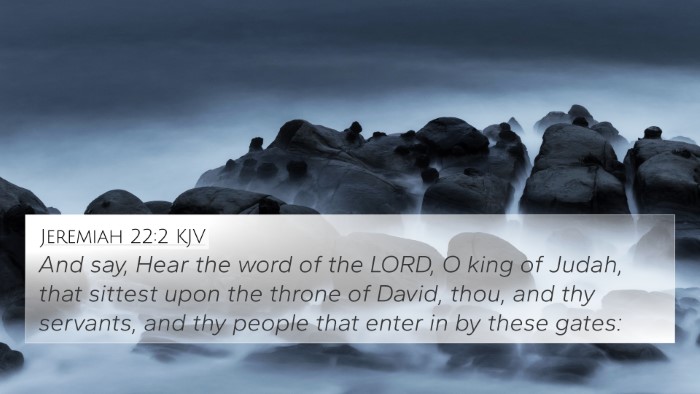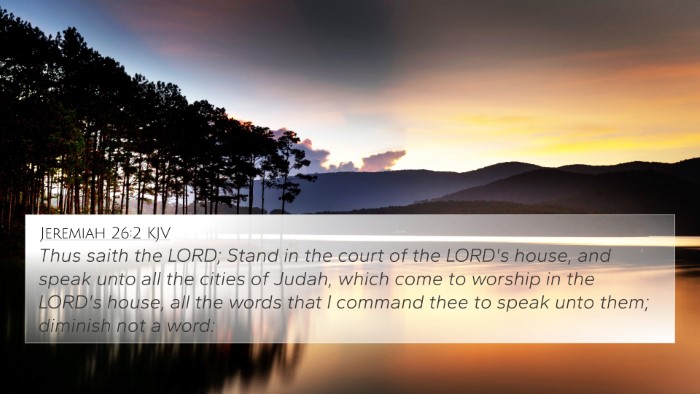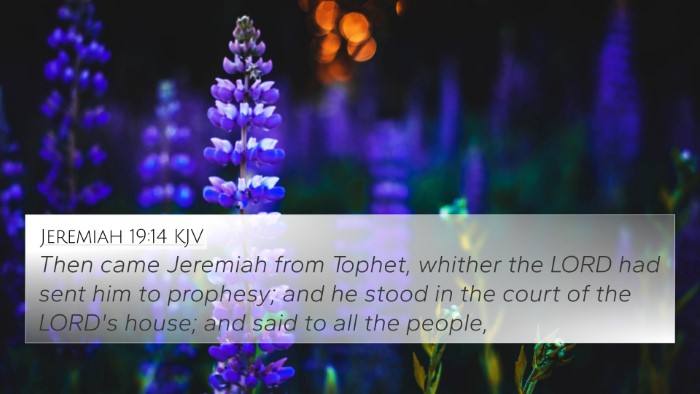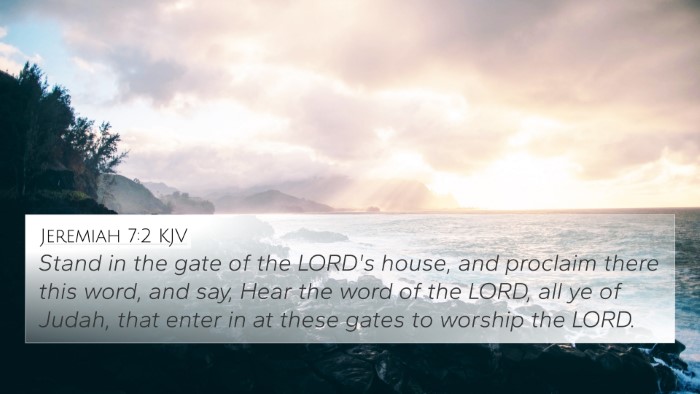Understanding Jeremiah 36:6
In Jeremiah 36:6, the prophet is instructed to take a scroll and publicly proclaim God’s messages of judgment and warning to the people of Judah. The verse reads:
"Therefore go thou, and read in the roll, which thou hast written from my mouth, the words of the LORD in the ears of the people in the LORD's house upon the fasting day: and also thou shalt read them in the ears of all Judah that come out of their cities."
Verse Meaning and Context
This command reflects the urgency and seriousness of God's message through Jeremiah. The act of reading the scroll publicly during a time of fasting indicates the need for repentance and alignment with divine will.
-
Significance of Public Reading:
Matthew Henry comments on the importance of the public proclamation of God’s word, stressing that it needs to be delivered to the audience so they can understand the magnitude of their disobedience and the serious implications it has for their nation.
-
Divine Command:
Adam Clarke highlights the divine authority behind this command, noting that the message is not merely human wisdom but a direct deliverance from God, meant to lead the people towards repentance.
-
Fasting as a Context:
Albert Barnes observes that the setting of this reading during a time of fasting is significant as it indicates a collective recognition of need for God's mercy, making their hearts more receptive to the warnings expressed in the scroll.
Bible Verses Related to Jeremiah 36:6
To understand Jeremiah 36:6 fully, we can explore multiple scripture references that echo similar themes of proclamation, judgment, and divine mercy. Here are several Bible cross-references that relate to this verse:
- Isaiah 55:11: The assurance that God's word will not return void.
- Ezekiel 3:17-18: The responsibility of the watchman to warn the people.
- 2 Timothy 4:2: The call to preach the word and be ready in season and out of season.
- Revelation 1:3: The blessedness of reading out loud the words of prophecy.
- Psalms 119:105: The word of God as a lamp and light for guidance.
- Acts 2:14-36: Peter’s public proclamation on the Day of Pentecost.
- Matthew 28:19-20: The Great Commission to make disciples and teach them.
Connections Between Bible Verses
The act of reading God's word aloud to the people, as commanded in Jeremiah 36:6, creates a thematic link with numerous verses where prophetic messages were delivered, thus emphasizing the continuity of God’s call for His people to heed His words. These connections include:
- Linking with the Prophets: The similarity between Jeremiah’s call and Isaiah’s messages reflects a unified prophetic voice throughout the Bible.
- Connecting to Apostolic Teachings: Just as Jeremiah was to deliver God’s message, the apostles, especially Paul, were tasked with sharing and expanding upon the truth of Christ, as seen in 1 Corinthians 15:1-4.
- Thematic Bible Verse Connections: The themes of repentance and warning are predominant in both Jeremiah’s writings and the messages of Jesus, making the need for public proclamation a continuous thread in scripture.
Tools for Bible Cross-Referencing
For those interested in further exploring the connections within scripture, various tools and methods for Bible cross-referencing are available. These include:
- Bible Concordance: A valuable resource to find specific words and themes across the scripture.
- Bible Cross-Reference Guide: Helps identify verses that support similar themes or concepts.
- Cross-Reference Bible Study: Methods to engage deeply with themed studies through inter-Biblical dialogue.
Conclusion
In conclusion, Jeremiah 36:6 stands as a powerful testament to the importance of God’s word and the necessity of proclamation among His people. By engaging with related scriptures, readers can gain a more profound understanding of the interconnections throughout the Bible and the consistent call toward repentance and obedience. As we reflect on this, let us seek to be diligent in our own proclamation of God's truth and instructions, fostering a deepened relationship with His Word.
